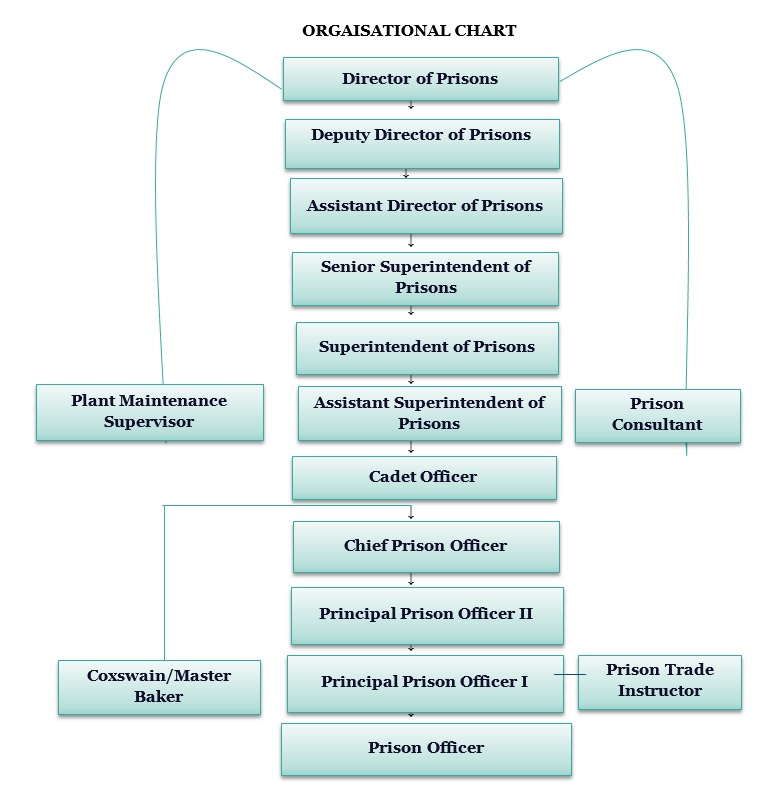About Us
Background
The Guyana Prison Service (GPS) operates under the Prison Act # 26 of 1975 along with its subsequent amendments. This is the legislative framework for the GPS which establishes the key parameters that include the articulation of the management structure of the Prisons as well as the main powers and responsibilities of the Director of Prisons.
The prisons operate under the jurisdiction of the Minister of Home Affairs. Under the Prison Act, Cap 11:01 Laws of Guyana, the Minister has powers that present an oversight framework for ensuring that the GPS functions effectively.
The core function of the Guyana Prison Service is to provide safe custody of offenders who have violated the law of the land and are referred to it by the courts.
Composition of the GPS
The GPS is comprised of a Headquarters situated in Georgetown and five (05) Prison Locations. These locations are Georgetown; Mazaruni; New Amsterdam; Lusignan and Timehri. The Mazaruni location is also home to the Sibley Hall prison which operates as an annex to the main prison. The New Amsterdam prison compound houses both a male and a female facility. These facilities are separated from each other by a fence.
Each of the prison locations is headed by an Officer-in-Charge.
Mission & Vision Statement
Mission Statement
The Guyana Prison Service, as an integral part of the Criminal Justice System, utilizes international standards and practices to provide a secure environment for staff and offenders. The aim, through these approaches, is that offenders are rehabilitated and reintegrated into society as law-abiding citizens, thus contributing to public safety, so critical for national development.
Vision Statement
Guyana Prison Service is a highly efficient correctional institution with modern technological facilities and competent staff who empower and rehabilitate inmates through structured programmes thereby contributing to reduced recidivism and increased public safety.
Strategic Goals
1) Modernizing Penal legislation and restriction
2) Enhancing Human Resource Management and Development of GPS
3) Modernizing and Securing Prison Infrastructure
4) Strengthening Inter-Agency Collaboration with the Criminal Justice System
5) Promoting Successful Offenders Re-Integration into Society
6) Advancing Holistic HealthCare in Prison
7) Rebuilding Public Confidence and Trust
8) Restructuring Prison Enterprises

